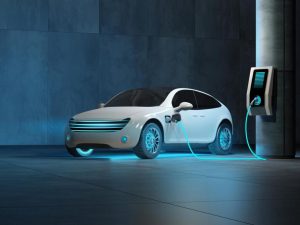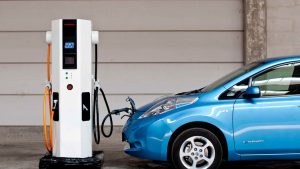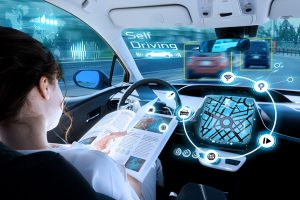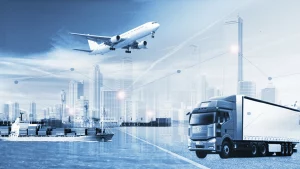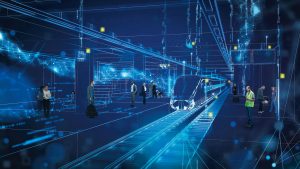
Cancer has been one of the deadliest diseases that have plagued humanity for centuries. The most conventional cancer treatment methodologies, such as chemotherapy and radiation therapy, come with their own set of limitations and challenges. However, in recent years a new technology called nanoparticles has emerged as a promising solution to this age-old problem. Nanoparticles can target cancer cells directly without harming healthy ones, which makes them an exciting prospect for researchers worldwide. In this blog post, we will explore how nanoparticles work in cancer treatment, their benefits and risks associated with using them in treatments, current use cases of this technology and what the future holds for nanoparticle-based therapies.
What are nanoparticles?
Nanoparticles are incredibly small particles that range from 1-100 nanometers in size. To put this into perspective, a single human hair is approximately 100,000 nanometers thick! These tiny particles have unique physical and chemical properties that make them versatile and useful for various applications.
Nanoparticles can be made using different materials such as metals, polymers, and ceramics. They can also be engineered to carry specific drugs or molecules that target cancer cells. The surface of nanoparticles can be modified with ligands or antibodies to recognize cancer cells specifically.
Nanoparticle-based delivery systems offer several advantages over traditional drug delivery methods. They have the potential to improve drug efficacy by reducing toxicity levels and increasing selectivity towards the targeted tumor cell population.
Moreover, nanoparticles’ unique properties allow them to penetrate through tissue barriers more effectively than larger-sized particles. This ability helps enhance the accumulation of therapeutic agents at the desired site of action while minimizing their distribution throughout healthy tissues.
Nanoparticles are revolutionizing medicine’s approach towards treating cancers and other diseases by offering a new level of precision in delivering therapies while minimizing adverse side effects on patients’ health.
How do nanoparticles work in cancer treatment?
Nanoparticles are incredibly small particles that can be engineered to carry drugs directly to cancer cells. When injected into the body, these nanoparticles travel through the bloodstream and can target specific types of cancer cells based on their size, shape, or surface proteins. Once they reach their targets, they release the drug payload directly into the cancer cells.
This targeted approach is particularly beneficial because it reduces the amount of chemotherapy needed to treat cancer patients by delivering drugs only where they are needed. By doing so, it helps minimize damage to healthy tissues and organs throughout the body.
Additionally, some nanoparticles have been designed to respond specifically to certain stimuli such as pH levels or temperature changes in order to further enhance their effectiveness against cancer cells.
Nanoparticle technology offers a promising new way of treating cancers more effectively while minimizing harmful side effects associated with traditional chemotherapy treatments.
What are the benefits of using nanoparticles in cancer treatment?
Nanoparticles have shown great potential in the field of cancer treatment. One of the major benefits of using nanoparticles is their ability to selectively target cancer cells while leaving healthy cells intact, minimizing damage to healthy tissue. This targeted approach can reduce side effects associated with traditional chemotherapy treatments.
Another benefit of nanoparticle-based therapies is their versatility in delivering a variety of drugs and agents directly to cancerous tissues. Nanoparticles can be engineered to carry specific drugs or imaging agents, enabling more precise diagnosis and treatment options for patients.
In addition, nanoparticles are highly customizable and can be designed to respond to different stimuli such as temperature, pH levels or light exposure. This allows for better control over drug release and targeting within the body.
Furthermore, studies have shown that nanoparticle-based treatments may also improve patient outcomes by enhancing drug efficacy through prolonged circulation time in the bloodstream and increased drug uptake by tumor cells.
Using nanoparticles in cancer treatment has numerous benefits that show great promise for improving patient outcomes while minimizing side effects associated with traditional chemotherapy treatments.
Are there any risks associated with using nanoparticles in cancer treatment?
While the use of nanoparticles in cancer treatment has shown promising results, it is important to consider the potential risks associated with this technology. One concern is the possibility of toxicity from the nanoparticles themselves. Since these particles are so small, they can potentially enter healthy cells and cause harm.
Additionally, there may be concerns about long-term effects on patients who receive nanoparticle-based treatments. It is still early days for this technology, and more research will need to be done to fully understand any potential risks.
Another issue that could arise is how the nanoparticles are eliminated from the body after treatment. If they cannot be effectively cleared by natural processes like excretion through urine or feces, they could accumulate in tissues over time and potentially cause damage.
There may be concerns around manufacturing practices when it comes to producing nanoparticles for medical use. There needs to be strict quality control measures in place to ensure that these particles are safe for human use.
While there do exist some potential risks associated with using nanoparticles in cancer treatment, many researchers believe that the benefits outweigh them at this time. As we continue to learn more about this exciting new technology and refine our techniques for using it safely and effectively, we will likely see even greater advancements in cancer treatment moving forward.
How is this technology being used currently?
Currently, researchers are developing nanoparticles that can specifically target cancer cells while leaving healthy cells unharmed. This targeted approach has the potential to drastically reduce side effects associated with traditional cancer treatments such as chemotherapy and radiation therapy.
One example of nanoparticle use in cancer treatment is the drug Doxil. Doxil uses liposomal nanoparticles to deliver the chemotherapy agent doxorubicin directly to tumor cells. The nanoparticles bind to proteins on the surface of tumor cells, allowing them to be taken up by the cell and release their payload.
Nanoparticles are also being explored for their ability to enhance imaging techniques used in cancer diagnosis and treatment planning. Magnetic nanoparticles, for example, can be used as contrast agents in MRI scans to highlight areas of abnormal tissue growth or metabolism.
Another promising application of nanoparticle technology is in immunotherapy for cancer treatment. Nanoparticles can be designed to stimulate an immune response against specific cancer antigens, potentially leading to more effective and less toxic treatments.
Current research into using nanoparticles for cancer treatment shows great promise for improving patient outcomes and reducing negative side effects associated with traditional therapies.
What does the future hold for nanoparticle cancer treatments?
The future of nanoparticle cancer treatments is promising, as researchers continue to explore new ways to improve their effectiveness. One area that holds great potential is combining nanoparticles with other therapies, such as chemotherapy or radiation. This could potentially enhance the efficacy of traditional cancer treatments while minimizing side effects.
Another exciting development in the field is the use of targeted nanoparticles that can seek out and destroy cancer cells without harming healthy tissue. These targeted particles are designed with specific receptors on their surface that bind to proteins found only on cancer cells, allowing them to deliver their payload directly where it’s needed most.
Furthermore, advancements in nanotechnology may lead to even more innovative approaches for treating cancer. For example, researchers are exploring new methods for releasing drugs from nanoparticles at a controlled rate using light or magnetic fields.
As we learn more about how nanoparticles interact with living organisms and develop increasingly sophisticated techniques for synthesizing them, the possibilities for using this technology in medicine will only continue to grow. While there are still many challenges ahead, the future looks bright for nanoparticle-based cancer treatments.
Conclusion
Nanoparticles are a promising breakthrough technology in cancer treatment. They offer numerous benefits such as targeted drug delivery and reduced side effects compared to traditional chemotherapy treatments. However, there are also potential risks associated with their use that need to be carefully studied and addressed.
Despite the challenges, researchers continue to explore the possibilities of using nanoparticles in cancer treatment. As technology advances, we can expect even more innovative solutions for treating cancer using nanoparticle-based therapies.
While there is still much research needed before this technology becomes widely available for patients, it’s exciting to see how far we’ve come in the fight against cancer. With ongoing advancements and discoveries being made every day, there’s hope on the horizon for those who have been impacted by this devastating disease.
Navigating the Complexities of AI Ethics: The Role of Corporations, Governments, and Individuals
Artificial Intelligence (AI) has become an integral part of our lives in ways we couldn’t have imagined a decade ago. From personal assistants to self-driving cars, AI is revolutionizing every industry and aspect of our society. However, with the growing influence of AI comes ethical complexities that can’t be ignored. As corporations develop new technologies and governments regulate them, individuals are left to navigate the intricacies on their own. In this blog post, we’ll discuss the role each entity plays in AI ethics and provide insights on how to make ethical decisions about AI. So buckle up as we delve into the complex world of AI ethics!
The ethical complexities of AI
The ethical complexities of AI are numerous and multifaceted, with no easy answers or solutions. One of the main concerns is that as AI becomes more advanced, it will have a greater impact on our society and raise new ethical questions. For example, who is responsible if an autonomous vehicle causes an accident? Should we allow machines to make life-or-death decisions, such as in healthcare? These are complex issues that require careful consideration.
Another concern is bias in AI systems. If algorithms are trained on biased data sets, they may perpetuate and even amplify existing biases. This could lead to discrimination against certain groups or individuals based on race or gender. It’s essential to ensure that AI systems are developed ethically and tested for potential biases before being deployed.
Privacy is also a significant issue when it comes to AI ethics. With the vast amount of data collected by these systems, there’s a risk of sensitive information being misused or exploited without consent. Companies must be transparent about how they collect and use data while ensuring user privacy rights are protected.
There’s the question of job displacement caused by automation through artificial intelligence technologies. While some argue that this will create new jobs requiring human skills like creativity and social interaction, others worry about those left behind by technological advancements.
Navigating the ethical complexities surrounding AI requires thoughtful consideration from all entities involved – corporations developing technology responsibly, governments regulating its use appropriately and individuals understanding their role in shaping society’s future with technology advancements
The role of corporations in AI ethics
In today’s digital age, Artificial Intelligence (AI) has revolutionized the way we live and work. From autonomous cars to virtual assistants, AI is transforming many aspects of our daily lives. However, with great power comes great responsibility – and this is where corporations play a crucial role in ensuring that AI is developed ethically.
Corporations have a responsibility to consider the ethical implications of their use of AI technology. They must ensure that their products are not discriminatory or biased towards any particular group. Additionally, they should be transparent about how they collect data and how it is used.
One way for corporations to approach AI ethics is through developing an ethical framework or code of conduct for their employees who work on AI projects. This can help guide decision-making when faced with challenging ethical dilemmas.
Moreover, corporations can collaborate with other stakeholders such as academics and government agencies to develop industry-wide standards for responsible AI development and deployment.
Corporations should prioritize investing in research into the long-term effects of AI on society as a whole. As more companies adopt these practices, we will see significant improvements in the ethical considerations surrounding Artificial Intelligence technology.
The role of governments in AI ethics
In the world of AI, governments play a crucial role in ensuring ethical practices are followed. They have the power to regulate and set standards for how AI is developed, deployed and used across different sectors.
One major responsibility of governments is to ensure that AI technologies do not violate human rights or discriminate against any particular group. This means developing policies that promote fairness, transparency, accountability and privacy protection in all AI applications.
Another area where governments can contribute positively is by investing resources towards creating systems that enhance safety and security within society. For example, they can collaborate with private entities to develop algorithms designed to detect potential cyber threats or identify emerging patterns of criminal activity.
Governments also have a duty to educate citizens about the impact of AI on their lives. This includes providing training programs for individuals seeking employment opportunities in fields affected by automation as well as promoting public awareness campaigns around issues such as bias detection and mitigation.
Moreover, governments should encourage interdisciplinary collaboration between stakeholders including researchers from academia and industry experts working with startups or established companies alike so there is an open dialogue surrounding ethical concerns related specifically but not limited exclusively towards artificial intelligence development efforts worldwide
The role of individuals in AI ethics
As individuals, we also have a role to play in ensuring the ethical use of AI. It is important for us to be aware of the potential impacts of AI on society and take responsibility for our own actions when it comes to using and developing these technologies.
One way individuals can contribute is by considering the ethical implications of their work when designing or implementing AI systems. This means taking into account issues such as bias, privacy, and accountability from the outset rather than treating them as an afterthought.
Another important aspect is education. As more industries integrate AI into their operations, it’s crucial that individuals are equipped with a basic understanding of what AI is and how it works. This will allow them to make informed decisions about its use both in their personal lives and professional careers.
Individuals can also advocate for transparency around how companies are using data collected through AI systems. By demanding greater visibility into these processes, we can hold corporations accountable for any unethical practices they may engage in.
Ultimately, each person has a unique perspective on the impact of technology on society. By actively engaging in conversations about ethics surrounding AI – whether online or with friends and colleagues – individuals can help shape policies that reflect shared values while advancing progress towards new frontiers.
How to make ethical decisions about AI
When it comes to making ethical decisions about AI, there are several important considerations that individuals, corporations and governments must take into account. First of all, it’s essential to understand the potential risks associated with AI systems and how they could impact different stakeholders. This means thinking carefully about issues such as data privacy, bias in algorithms and the potential for job displacement.
Another key factor to consider when making ethical decisions about AI is transparency. It’s crucial that those who develop and deploy these systems are open and honest about how they work, what data they use and how they make decisions. This can help ensure that people understand the implications of using these technologies and can make informed choices.
In addition to transparency, accountability is also vital when it comes to ethics in AI. Those responsible for developing or deploying these systems should be held accountable for any negative consequences that arise from their use. This includes taking steps to address issues such as bias or discrimination if they occur.
One of the most important things we can do to make ethical decisions about AI is simply staying informed. By keeping up with developments in this field and engaging in ongoing discussions around ethics and responsibility, we can ensure that we’re equipped to navigate the complex landscape of artificial intelligence in a way that benefits society as a whole.
Conclusion
The ethical complexities of AI are extensive and require a collaborative effort from corporations, governments, and individuals to navigate. As technology continues to advance at an unprecedented rate, it is essential that we prioritize ethical considerations in the development and deployment of AI systems.
Corporations must take responsibility for their actions by establishing clear guidelines for the use of AI within their organizations. Governments must regulate AI technologies to ensure they do not cause harm to society or violate human rights. Individuals have a role in advocating for responsible AI practices and holding both corporations and governments accountable.
Making ethical decisions about AI requires careful consideration of its potential impact on society as well as our values and principles. It involves weighing competing interests such as privacy, security, fairness, accountability, transparency and more.
Ultimately, the success or failure of navigating these complexities will depend on our ability to work together across sectors towards a common goal – ensuring that artificial intelligence serves humanity in ways that align with our shared vision for the future.








